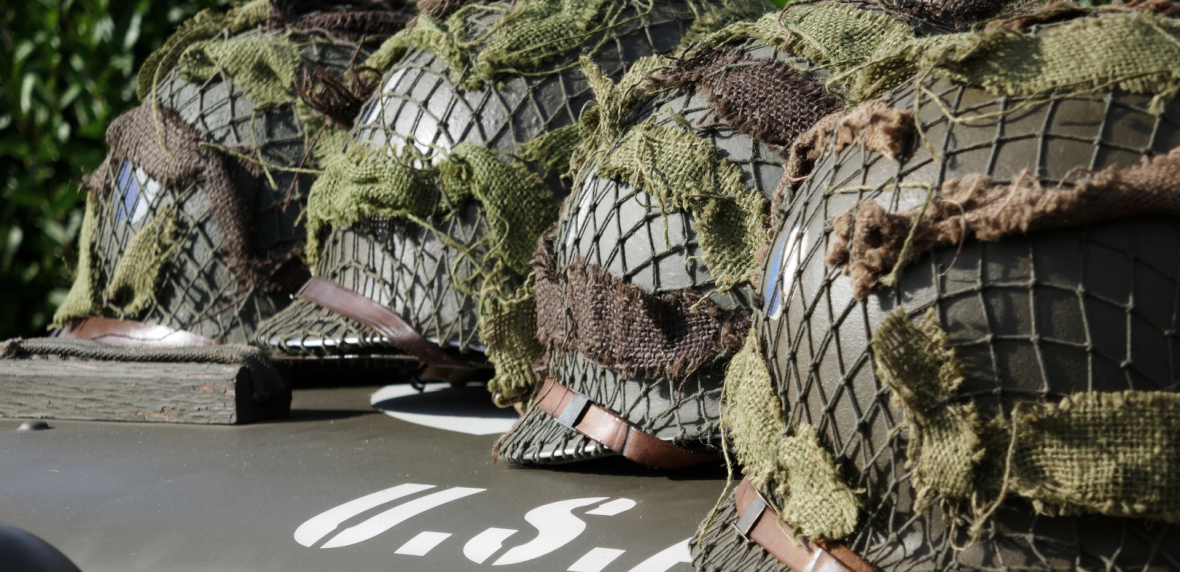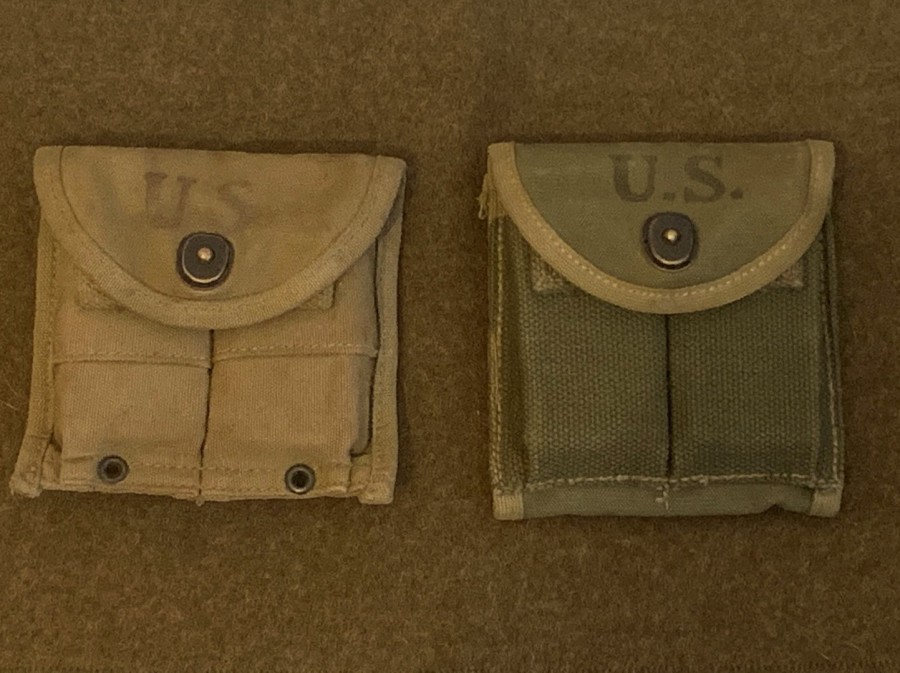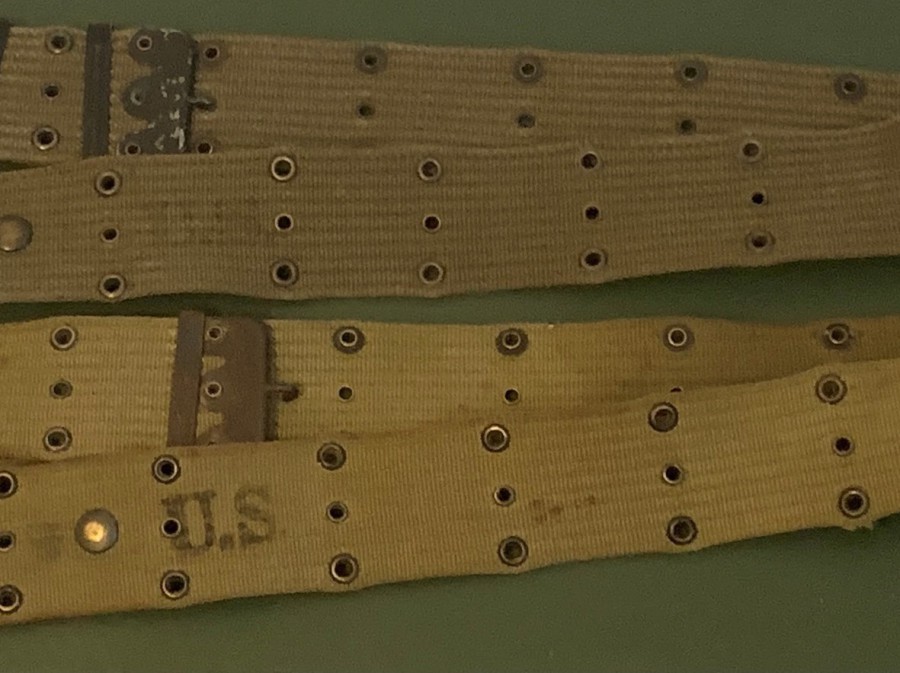
M1928 Haversack
The haversack was used during WW1 and modified in 1928 where it was then issued untill 1945. The bayonet and entrenching tool can be fixed to the haversack as well as the meat can pouch which would contain the mess tin or rations. Inside the pack would contain a shelter half, blanket, wash roll and socks as well as a few other personal items. The pack could be extended by the use of a pack tail attachment which was used during long marches in the US however we have no evidence of the 29th using the tails in the ETO.
Canteen, canteen cup and cover
There are many different versions of the canteen members of the 29th would have been issued. Anything from leftovers from the Great war, the short lived enamelled or plastic to save on aluminium or the more common stainless steel. Issued one per GI, sometimes extras would be given to 29ers that needed more, such as medics and weapons teams who used the water to cool their weapons, such as the mortar and to top up the water cooled .30 Cal machine gun.
First aid pouch and Carlisle tin
The first aid pouch was issued to all 29ers. The Carlisle tin contained a bandage and a packet containing sulphanilamide crystals (to be sprinkled around the wound). The tins were mostly made from tin, but again to save on metals for the war effort other materials were used such as plastic or waxed carboard.



